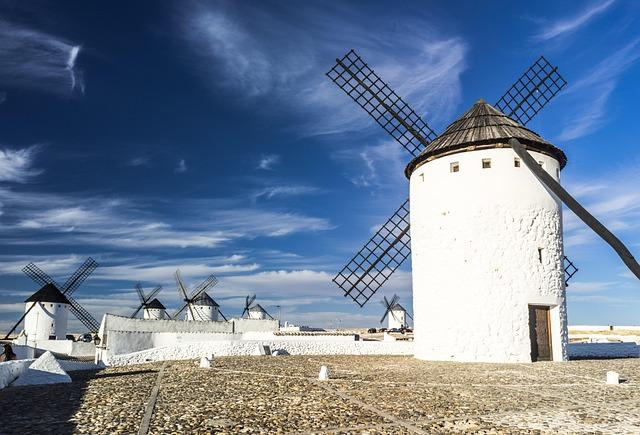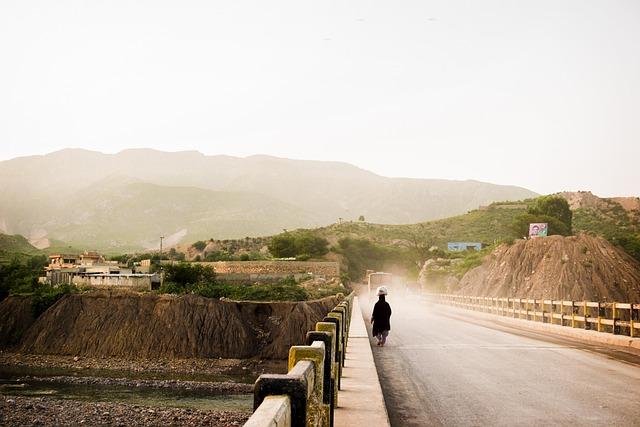In the heart of South Asia lies Pakistan, a nation of vibrant culture and untapped potential, standing on the precipice of transformative change. As the fabric of its economy expands and evolves, the call for robust infrastructure becomes increasingly urgent. From bustling urban centers to serene rural landscapes, the infrastructure that supports everyday life—roads, bridges, energy systems, and digital networks—plays a pivotal role in shaping sustainable growth. In the quest for progress, Pakistan must navigate the complex interplay of economic needs, environmental considerations, and social equity. This article delves into the multifaceted approach required to fortify Pakistan’s infrastructure, exploring innovative solutions, strategic investments, and collaborative efforts that can pave the way for a resilient future. Join us as we examine how enhancing infrastructure not only supports immediate development but also lays the groundwork for enduring prosperity, ensuring that no community is left behind in this journey towards a sustainable tomorrow.
Innovating Transportation Networks for Enhanced Connectivity
html
To foster a future where cities are interconnected seamlessly, innovative transportation networks play a pivotal role. By leveraging emerging technologies, Pakistan can transform its public transit systems into efficient, eco-friendly options that promote accessibility for all citizens. Envisioning smart transit solutions such as:
- Integrated Mobility Platforms: A single application to plan, book, and pay for various modes of transport, enhancing user convenience.
- Electric and Hybrid Buses: Introducing a fleet of environmentally friendly buses to reduce carbon footprints in urban areas.
- Bike-sharing Programs: Promoting sustainable commuting methods by providing bicycles for short-distance travel.
Furthermore, by developing robust infrastructure to support these networks, we can address the challenges of congestion and air pollution. It's essential to invest in multimodal transport hubs that unite different transportation modes, including rail, bus, and pedestrian routes, into cohesive systems. A strategic approach may encompass:
- Upgraded Rail Systems: Modernizing rail services to enhance efficiency and connectivity between major urban centers.
- Smart Traffic Management: Utilizing data analytics for real-time traffic monitoring and optimal routing to minimize travel times.
- Community Feedback Loops: Engaging citizens in the planning process to ensure transportation needs are met effectively.

Embracing Renewable Energy Solutions in Infrastructure Development
The integration of renewable energy solutions into infrastructure development serves as a cornerstone for fostering sustainable growth. By prioritizing these clean energy alternatives, Pakistan can significantly reduce its carbon footprint while enhancing energy security. Incorporating technologies such as solar panels, wind turbines, and bioenergy systems into new and existing infrastructure projects not only aligns with global sustainability goals but also stimulates local economies by creating jobs. With these initiatives, we pave the way for a resilient energy framework that supports the nation’s growth while also addressing climate change challenges.
Moreover, the financial benefits of embracing such solutions are compelling. In addition to lowering operational costs in the long run, renewable energy investments can attract foreign direct investment and funding opportunities. The table below illustrates some of the benefits associated with renewable energy adoption in infrastructure:
| Benefit | Description |
|---|---|
| Cost Efficiency | Reduced energy costs over time with lower maintenance needs. |
| Job Creation | New opportunities in manufacturing, installation, and maintenance. |
| Energy Independence | Reduction in reliance on imported fossil fuels. |
| Environmental Impact | Lower greenhouse gas emissions and improved air quality. |

Prioritizing Urban Planning for Sustainable City Growth
The future of urban environments hinges on the careful and thoughtful design of spaces where communities can thrive. Smart urban planning incorporates a holistic approach that prioritizes the balance between nature and human activity. Essential elements to consider include:
- Green Infrastructure: Integrating parks, green roofs, and permeable surfaces to improve air quality and manage stormwater.
- Mixed-Use Developments: Creating vibrant neighborhoods where residential, commercial, and recreational spaces coexist, fostering community interaction.
- Sustainable Transportation: Developing efficient public transit systems and pedestrian-friendly pathways to reduce reliance on personal vehicles.
- Resilience Planning: Ensuring that urban designs anticipate climate impacts, enhancing the durability of infrastructure against natural disasters.
Moreover, engaging local communities in the planning process can lead to more tailored solutions that reflect the needs of the populace. A transparent dialogue fosters trust and promotes collective responsibility for sustainability. To measure the effectiveness of urban strategies, cities can utilize a framework like the one below to track progress in key areas:
| Key Area | Current Status | Desired Outcome | Action Plan |
|---|---|---|---|
| Green Spaces | 10% coverage | 30% coverage | Increase park area and urban greenery |
| Public Transit Utilization | 25% of population | 50% of population | Improve service frequency and accessibility |
| Waste Recycling Rate | 15% | 50% | Implement education programs and facilities |

Leveraging Public-Private Partnerships for Effective Infrastructure Investment
The dynamic landscape of infrastructure development in Pakistan presents a unique opportunity for leveraging collaborations between the public and private sectors. Public-Private Partnerships (PPPs) can catalyze the flow of investment, bringing together the efficiency of private enterprise and the public sector’s access to funding and regulatory support. By engaging in strategic partnerships, the government can effectively tap into the expertise and innovation of private firms, which are often better equipped to deliver projects on time and within budget. The increasing focus on sustainable growth necessitates that these partnerships prioritize not only economic returns but also environmental considerations, ensuring that infrastructure developments enhance the well-being of communities and ecosystems alike.
A successful model for such collaborations should include clear frameworks and transparent processes that foster trust and accountability. One effective approach could involve the establishment of mixed-use development projects, enhancing urban spaces while providing necessary services. Proposed ideas can encompass:
- Transportation infrastructure improvements: High-quality public transit systems that ease congestion and reduce emissions.
- Water and sanitation projects: Sustainable systems that ensure equitable access to safe drinking water.
- Renewable energy installations: Solar and wind projects to power public facilities and reduce dependence on fossil fuels.
To illustrate the potential investments through PPPs, consider the following table that highlights key sectors and their projected impacts:
| Sector | Projected Investment (Billion PKR) | Expected Benefits |
|---|---|---|
| Transportation | 200 | Improved mobility, reduced travel time |
| Water Management | 150 | Enhanced access to clean water, flood control |
| Energy | 100 | Increased energy security, lower carbon emissions |
By capitalizing on these synergies, Pakistan can significantly enhance its infrastructure capabilities, paving the way for a resilient economy that supports sustainable growth in the years to come.
To Wrap It Up
the journey to bolster Pakistan’s infrastructure for sustainable growth is not merely about bricks and mortar; it is a commitment to the future—a vision that embraces innovation, environmental stewardship, and social equity. As the nation navigates the complexities of urbanization and economic development, the need for a cohesive strategy becomes ever more pressing. By investing wisely in infrastructure, fostering public-private partnerships, and prioritizing sustainable practices, Pakistan can lay the groundwork for a resilient economy that thrives for generations to come.
As the country stands at this pivotal crossroads, let us recognize that infrastructure is more than just the physical framework of roads, bridges, and buildings; it is the lifeblood of opportunity, connectivity, and progress. The path ahead may be challenging, but with determination and collaboration, Pakistan has the potential to cultivate an infrastructure that not only supports its immediate needs but also enhances the quality of life for all its citizens. In this endeavor, every step taken is a step toward a more sustainable and prosperous tomorrow. Let us move forward together, turning aspirations into reality, and building the foundations of hope and growth for the future.



